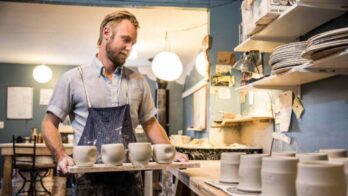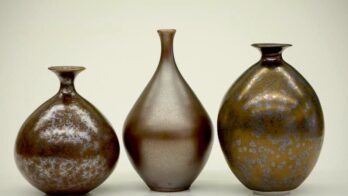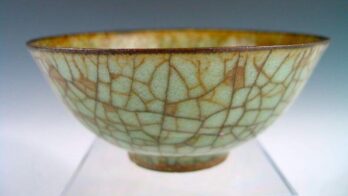Have you ever wondered what is the difference between pottery and ceramics?
There are many differences, but because they are both produced using similar techniques, there is no visible distinction between ceramics and pottery. However, the two terms have different meanings.
Both ceramics and pottery go through a process that includes forming, firing, glazing, and re-firing before completion. Therefore, each term has its specific meaning.
Ceramics vs. Pottery
The difference between pottery and ceramics is that pottery is mainly composed of clay, whereas ceramics comprise of clay, glazes, zirconium oxide, or silica.
Pottery items are generally clay pots, but there are many more ceramic goods available.
In addition, pottery is the oldest form of ceramics, and it’s typically made through traditional methods, whereas ceramics are usually made in factories.
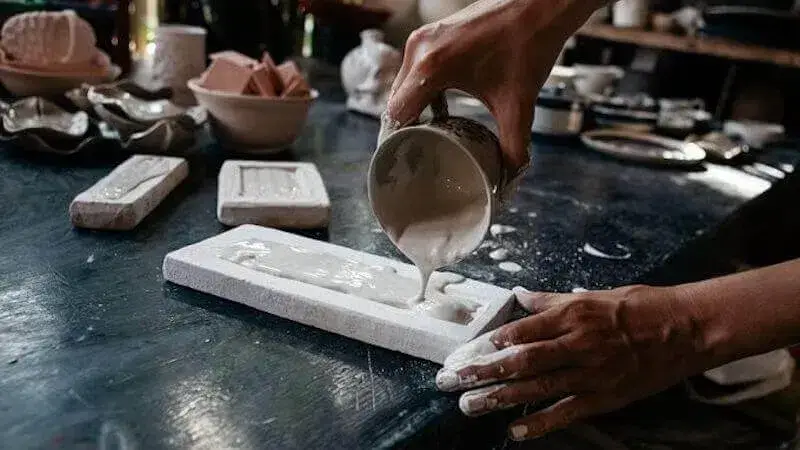

The Differences Between Pottery and Ceramics
The words “ceramic” and “pottery” are often used interchangeably. Ceramics refers to the art form as a whole, whereas pottery refers to objects composed of clay, such as pots.
- Ceramics is the general term for all-ceramic products, but it does not apply to all ceramics. Pottery is a type of ceramic.
- Ceramics are frequently manufactured in factories, where a person makes pottery.
- Ceramics are not limited to clay, as is pottery; ceramics get created from additional materials like silica or glazes rather than just clay.
- Ceramics have a smoother surface, unlike pottery products, which have a rougher surface since they are made by hand or on a potter’s wheel.
What are Ceramics?
The definition of ceramics is things manufactured from materials that are permanently changed when heated. Clay, for example, contains chemically bonded water, which will cause it to slake down (disintegrate) when a dried clay is immersed in water.
Thus, clay is converted to ceramic during the firing process, ranging from 660 to 1470 degrees Fahrenheit (350 to 800 degrees Celsius). Glazes are also comprised of ceramic materials since they alter during firing. Industrial ceramics include silica carbide and zirconium oxide, as well as others.
How to Make Other Ceramics
You can make different types of ceramics in a variety of ways. There are many different methods and techniques for creating ceramics, from essential ingredients to heat treatment and additives. People frequently stain their ceramic mix, for example. The end product is colored as a result of this.
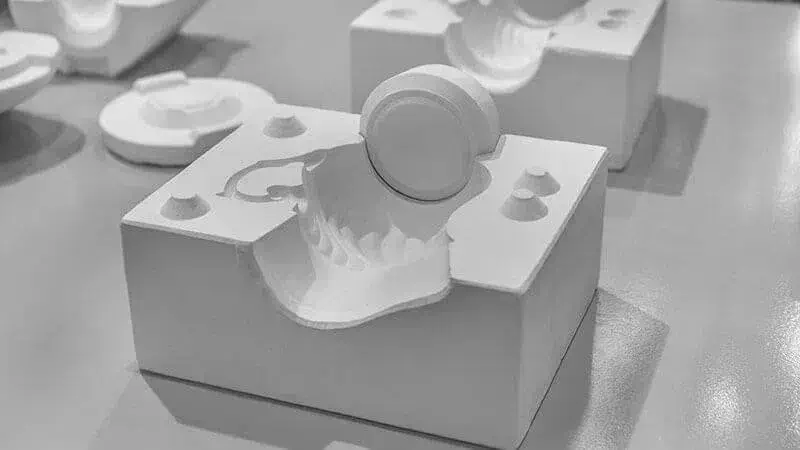

Non-ceramic materials are also used to improve the structure and integrity of products. Finally, most ceramics include a glaze finish. A potter’s wheel is terrific for various ceramic crafts, but it’s only suitable for specific tasks. For example, it’s the wrong way to go if you don’t want anything round and symmetrical.
To make ceramics, manufacturers often use molds and casts. Many of the techniques utilized for metal and glass work are also helpful for a wide range of ceramics. As a result, in this area, there is a significant distinction between ceramics and pottery.
What Is Pottery?
Pottery is commonly defined as containers. However, the words “pot” and “potting” are alternative names for a wide range of container shapes.
Both words come from the Old English potian, which means “to push.” It’s easy to see how the process got its name when we consider how a potter pushes as they throws clay on the wheel.
The word “pottery” may also be used as an adjective with certain items, such as little figurines. In the developed world, modern pottery is divided into two categories.
Commercial ceramics are made in factories, while individual artisans produce studio ceramics. “Art pottery,” on the other hand, can be manufactured commercially or by an individual craftsman.
How to Make Pottery
The pottery procedure entails spinning a pottery wheel. A pottery wheel is essentially like a tiny table that rotates on its own. Older versions had a disk at the foot, which you kicked to keep the clay spinning.
Modern designs typically feature foot pedals to make operating more effortless and more consistent. You mold the lump of clay with your hands or, on occasion, a tool while it turns. You end up with nice and generally symmetrical pots and similar containers this way.
You may form the opening of a pot or bowl, for example, by gently pushing in the middle. First, the sides are cupped to even out the form. Then you can change the shape by moving up and down and applying varying degrees of pressure.
When you’re finished shaping the clay, you put it in the kiln. It will heat up to the appropriate temperature and then cool down gradually, resulting in a completed piece of pottery. After that, you can decorate it as desired.
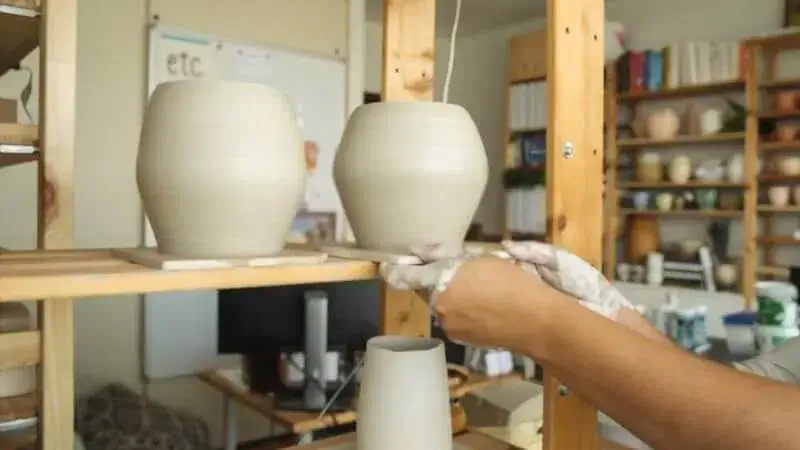

The 3 Main Types of Pottery and Ceramics
Let’s take a closer look at the three main types of pottery and ceramics. These include earthenware, stoneware, and porcelain. If you want to make a new piece of pottery or ceramic art for your home or office space, it is important to know what type of material you are working with before getting started.
Earthenware
Earthenware clay is fired at temperatures of between 1,000 and 1,150 degrees Celsius. As a result of this procedure, the material becomes hardened yet brittle, with tiny pores (small holes through which liquid or air can pass) that make it unsuitable to hold water. To prevent this, the glaze should be applied before being fired in the kiln for a second time and made waterproof.
Stoneware
Stoneware clay has a unique composition that is baked at a higher temperature of 1,200°C. As a result, the material becomes more durable and dense with a stone-like texture. In addition, the finished item will be waterproof and doesn’t need glazing, unlike earthenware.
Porcelain
Porcelain is made from a lump of refined clay that is subsequently fired at high temperatures of about 1,200–1,450°C. The result is a highly durable, glossy material that is typically white and translucent. The concept of porcelain originated in China around 1600 BC. This connection is credited with giving the phrase “fine china,” or bone china, to porcelain that had ground animal bone added to the clay to make an even more durable material.
The temperature at which the clay is fired and the quality, water resistance, and durability of the completed items will be essential distinctions to consider between Earthenware, Stoneware, and Porcelain.
The materials used to make the items will be determined by the quality and purity of the clay utilized in their creation. However, as a rule of thumb, Stoneware and Porcelain are the two more durable types of ceramic that are commonly used as tableware at home.
The Final Word on Ceramics vs. Pottery
When we think about the words “pottery” and “ceramics,” our thoughts immediately turn to clay items, but this isn’t the case. Although they are mainly created from clay, ceramics are produced using a variety of materials.
Pottery and ceramics are heated to make them more rigid and long-lasting. Potters create pots and clay products, then bake them at high temperatures, whereas ceramics are produced in factories. As a result, potter’s materials get created by artisans rather than being refined ceramic.
Thank you for reading this blog post. I hope it helped you understand the difference between pottery and ceramics. Why not check out our other posts on pottery advice.
Stay Safe & Keep Creating!



Enter your email below to get our FREE beginner friendly tips.
By entering your email address you agree to receive emails from Potters Passion. We'll respect your privacy and you can unsubscribe at any time.

